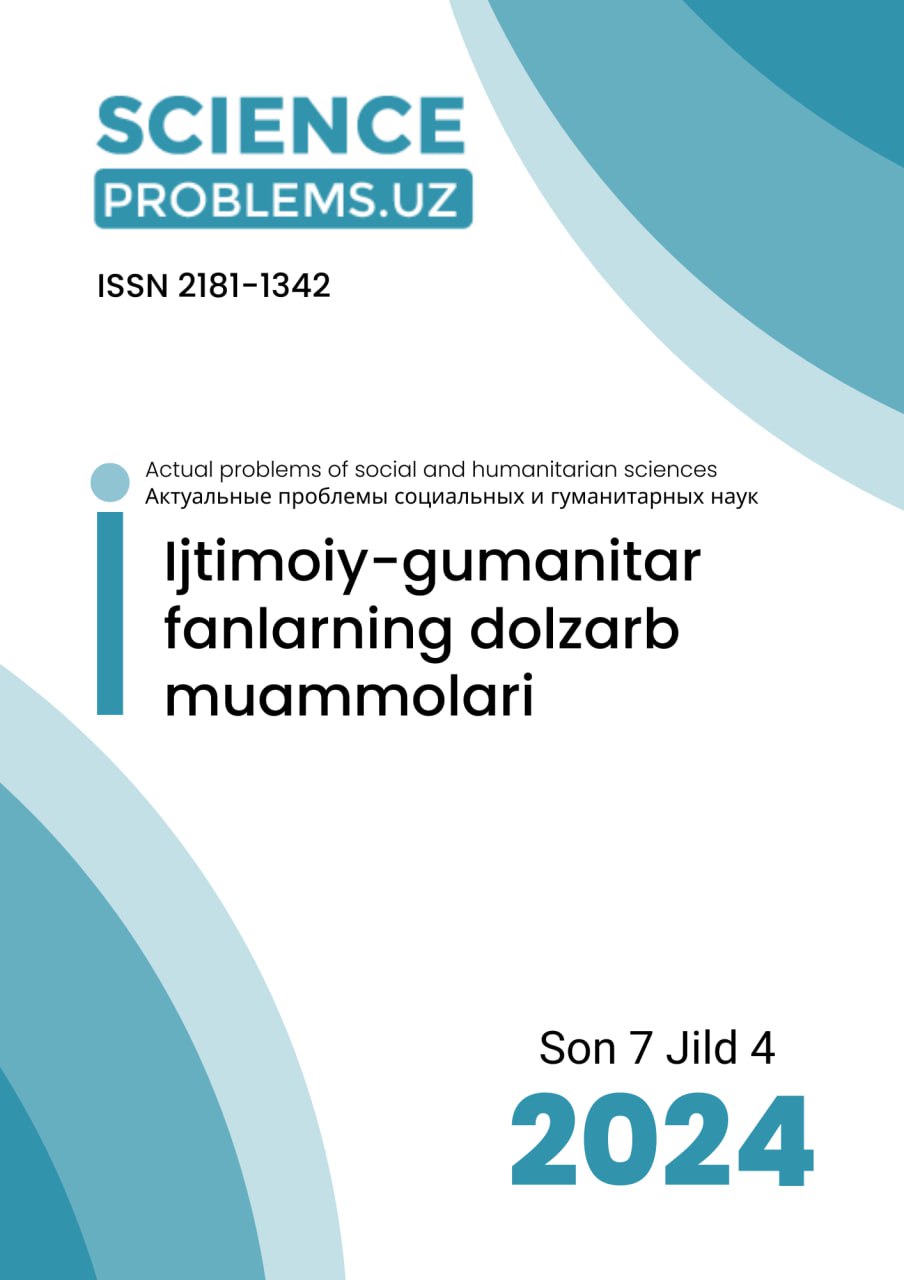THE EXISTENCE OF THE SCIENCE “PARABLE” IN THE ARAB WORLD EMBERGATION AND DEVELOPMENT
DOI:
https://doi.org/10.47390/SPR1342V4I7Y2024N29Keywords:
parable, parables, literary poets, genre of parable, “al-Mufaddaliyyat”, “Kitab al-amsal”, “Kitab al-bayan wa at-Tabiyn”, “Al-Fakhir”,Abstract
Arab culture developed in ancient times in interaction with the cultures of other peoples of the Near and Middle East. In particular, the culture of the peoples of Ancient Egypt and the region between the two rivers (Mesopotamia - present-day Iraq and Syria), the culture of ancient Phenicia, Palestine, Yemen, Iran and other peoples are not absent. Poetry, formed two centuries before Islam, has the character of semi-oral, semi-written literature. Among the Arabs, verbal creativity did not have a specific term at all. One of the most traditional forms of oral art is popularly called “parable” (plural “parables”), and it has a special place in Arab spirituality. This article provides detailed information about the origins and formation of the science of parables in the Arab world, as well as its great influence on Arabic literature.
References
Рудолф Залҳаим. Ал-амсал ал-арабиййа ал-қодима: маъа иътина хосс би китаб ал-амсал ли Аби Убийд. – Байрут-Лубнан, 1971. – С. 13-20.
Муҳаммад Тавфиқ. Ал-амсал ал-арабиййа ва ал-аср ал-жаҳилий. – Байрут, 1988. – 367 с.
Муҳаммад Абу Суфа, 1987й., 29 б.
Muhammed Cevdet Ismail. Turk-Arap Darbimeselleri Uzerine Mukayeseli bir Arastirma. – Ankara Univer, 1976. – 191 s.
Ahmet Bulut. Arap Dili ve Edebiyatinda Emsal. – Istanbul Univer, 1984. – 115+271 s
Кахаров А.С. “Масал” в книге “Китаб ал-хайаван” ал-Джахиза: Автореф. дисс.. канд. филол. наук. – Т., 1993. – 21 с.








